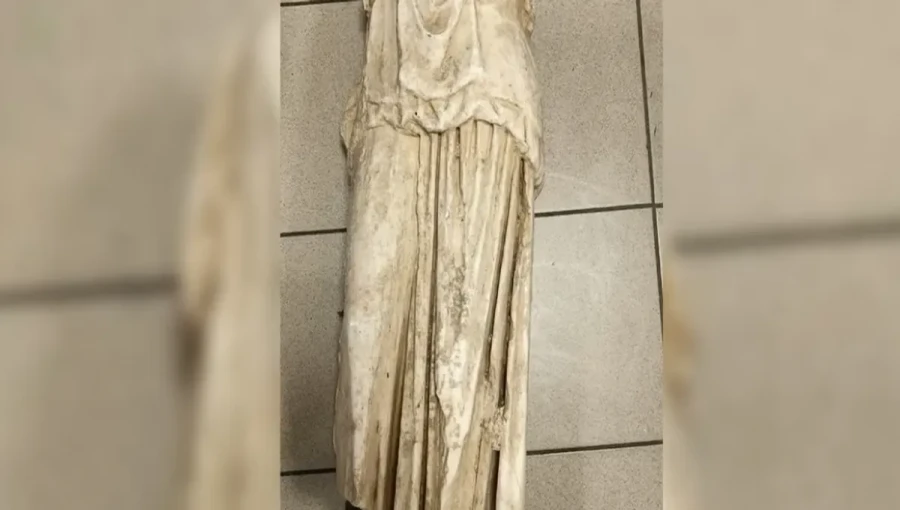Greece, Jan 24, (V7N) - A mysterious discovery of a headless statue believed to be around 2,000 years old has sparked a police investigation in the Greek port city of Thessaloniki. The statue, dating back to the Hellenistic period, was found on January 18, 2025, inside a black plastic bag near trash bins in the city’s central area.
The statue was discovered by a 32-year-old local man who immediately reported it to the authorities. Upon finding the artifact, the man took it to local police, who then contacted experts for further examination.
The statue, believed to date back to the Hellenistic period (323 BC – 30 BC), is thought to have been created during a time between the death of Alexander the Great and the Roman conquest of Egypt. The Hellenistic period was known for its flourishing of art, science, and culture, and many statues from this era depict gods, heroes, and famous leaders of the time.
The Ephorate of Antiquities, a department responsible for the preservation of ancient Greek artifacts, quickly stepped in to examine the find. Archaeologists noted that the statue was made of marble, though its head was missing, leaving many questions about its original identity and the circumstances surrounding its abandonment.
Greek authorities are now investigating how the statue ended up discarded near the trash bins and whether it was stolen or illegally removed from an archaeological site. The Ephorate has confirmed that the statue is genuine, and additional investigations are ongoing to determine its full historical significance.
The statue’s condition, with the head missing, raises questions about its possible theft or damage over the centuries. While the Ephorate of Antiquities works to conserve the piece, it is still unclear if the missing head will ever be recovered.
This discovery has led to widespread interest among local and international archaeologists, who are eager to uncover more details about this ancient artifact. The statue’s origins, cultural context, and the story of how it was discarded remain a mystery, but it serves as a reminder of the many hidden treasures and histories lying beneath the surface of modern-day Greece.
END/WD/SMA/






























Comment: